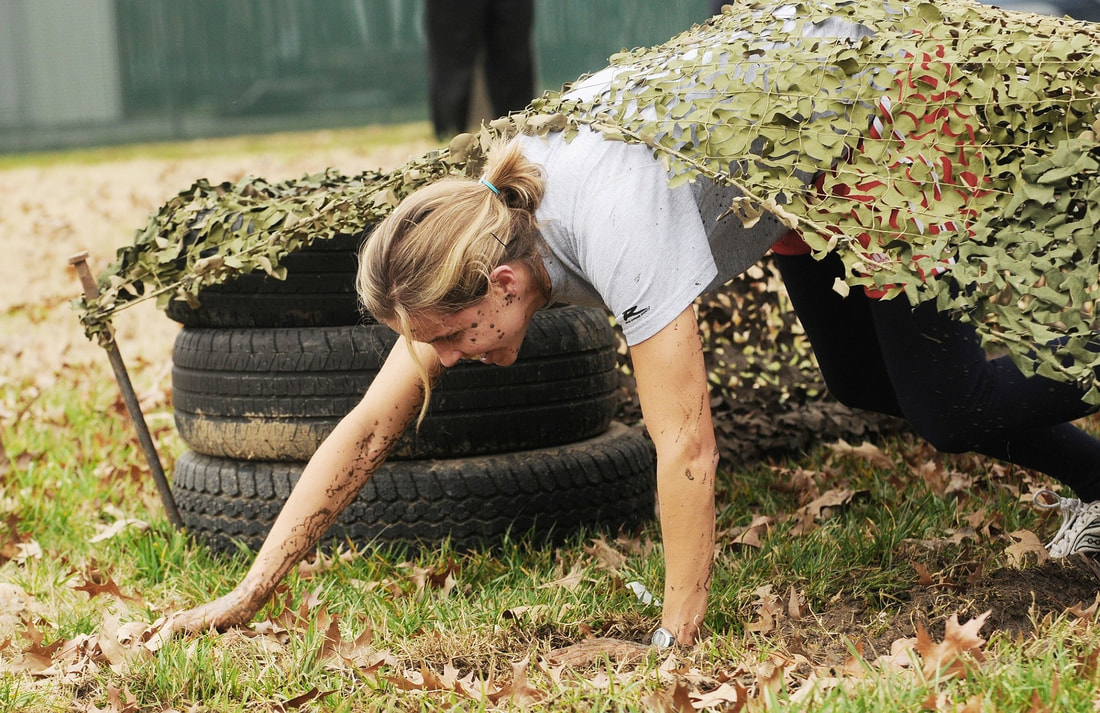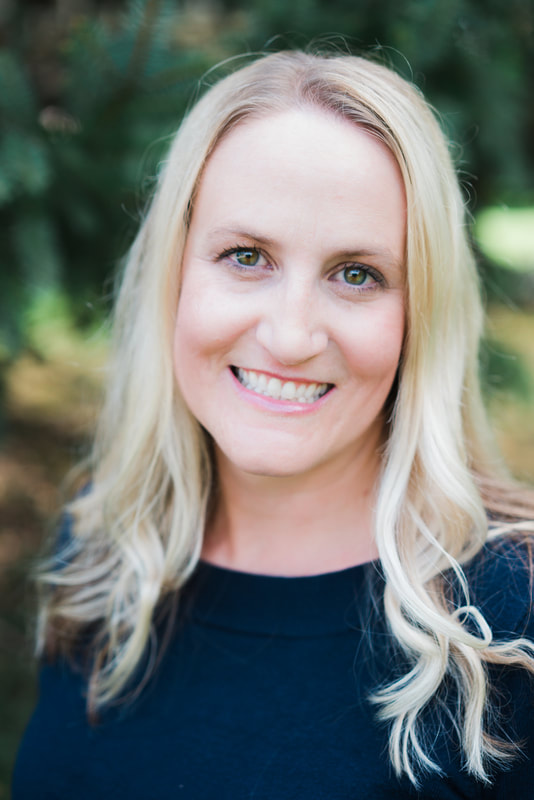|
As my girls’ soccer season comes to an end, I find myself feeling a sense of sadness , a sense of longing to be with the team. As parents, we’ve spent months together, sitting on the sidelines at practice, sharing snacks, talking about school and the weather, trying to keep little siblings occupied. Then at the games, cheering, screaming for our team. Jumping up and down with excitement when one of our girls scores or has an amazing save. High-fiving each other. And then at the end, declaring “good game” no matter if we won or lost. Then there was the championship game. The anticipation, the nerves. The screaming and cheering. The high-fives. And the “what a great season!” I will miss that. Why? To be honest, I don’t even know the names of the other parents. I don’t really know who they are. But we are connected by one common thread. We are a team. And when you spend that much time together fighting for a common purpose, being driven with dedication, you bond. You are strengthened.
Whether it is a soccer team or a work team, find your purpose. Fight for it. Say it out loud and cheer together. Be strengthened. And at the end, amongst high-fives, don’t forget to say, “good game.”
0 Comments
I was interviewing for a management position in a dental office. The interview went well, but I was a little bit surprised when the dentist said that his wife would be taking me out to lunch to meet the other staff members. And he would not be there. We had a casual lunch, sitting on the tall chairs at Applebee’s, eating nachos. I’ve been in similar positions before, knowing that this isn’t just lunch. This is an interview with, not only the staff, but also with the dentist’s wife. I was friendly, confident, and engaging. I was trying hard to be myself and proving that I was likeable and approachable (two very important characteristics of a manager). I really wanted to work there. I was hungry, and not just for the nachos.
The dentist did something really right – he had his staff take me out to lunch. Patrick Lencioni, author of 11 books on leadership and organizational health, explains that interviews these days should be nontraditional. You may still want to use a series of behavioral-based questions (the what is your typical role in a team setting? type), but you need to go beyond that. You need to make sure that you are hiring someone that is humble, hungry, and smart (see How to Hire a Hungry Employee – Part 1). These personality traits don’t always come out in an interview, so you need to do something with them. Take them shopping, or take them to dinner or lunch (like the dentist did). Take them somewhere where they have to interact with people in a social setting. Lencioni says that it’s easy to “fake” an interview and be charming or witty. But to really see how a person behaves in a social situation, you need to put them in one. Let’s talk more about the interview. Be frank with the candidate. Lencioni says to be up front and say, “This is what I’m looking for.” It is not your job to win them over. Don’t hire out of desperation. You will be surprised at how many people you will weed out when they hear you mention that you need someone willing to work overtime. If you’ve done a one-on-one interview and have narrowed down your search to a few qualified candidates, Lencioni suggests doing a group interview. Most, if not all, businesses require working as a team and interacting with people. This is a great opportunity to see how they interact with each other in a stressful situation. You will start to see who you would enjoy working with the most, and that can make all the difference. Does your business require someone with a sense of humor? Work it into your interview process. Maybe it’s a funny (but appropriate) question or requiring them to wear something funny to the interview. This will definitely weed out the people that aren’t comfortable being funny. If you are still not quite ready to make the leap into hiring an individual, Lencioni recommends hiring them as a temp for one week. This is a paid, working interview. The hungry candidate will gladly accept this offer. And the employer will have first-hand experience at how well the candidate will fit into the organization. I used to require working interviews in the dental office that I managed. It was a great chance to see how the candidate greeted patients, answered phones, interacted with the staff, and stayed organized in a busy environment. I could see if this person was humble, hungry, and smart. Lastly, Lencioni says not to over-emphasize the quantifiable aspects of the job. You don’t have to, and don’t want to, lure candidates by money. You will be bringing on the wrong people. Remember, you are not trying to win them over. What is one of the most sought-after companies that people want to work for? Southwest Airlines. Thousands of people apply to work for Southwest, not because of the pay, but because of the love culture. If you have an environment where people want to go to work every day, you will not need to win them over. They will be hungry enough to work for you. Find the hungry employee. (Are you interested in learning more from Patrick Lencioni? Click here) It was January when I flew to Minneapolis to interview with a Fortune 100 company. I was picked up at the airport in a limo, dropped off at a fancy hotel near the Mall of America, and dinner was at an elite restaurant that evening. I sat with two hiring managers and two other job candidates. I knew very well that my interview wasn’t starting the next day. It started the moment I was picked up at the airport. At dinner I made sure I brought my A game. I was polite, engaging, and smiled appropriately. I remember going back to my hotel room that night feeling exhausted. But I sat at my desk, overlooking the city skyline, and prepared all of my answers for the potential behavioral-based questions I would be asked the next day. I was ready.
The morning came early, and the limo dropped me off at the front doors of headquarters. My series of interviews began. Throughout the day I met with high-ranking leaders in the company, staying poised even when I didn’t know exactly how to answer their question. But I remained confident. My day ended with a personality assessment. Of course, I over-thought all of the questions – wondering how they wanted me to answer. It was an exhausting day but a good day. That company does a lot of things right. They invest in the time to find and hire the right people. And I’m sure that they have hired many great employees that fit their company culture. Interviewing has changed and evolved over the years. It’s not all about the behavioral-based questions anymore. And we all know those questions. Tell me about a time that you worked well with a team? Tell me about a time that you overcame an embarrassing moment at work? How would you describe your communication style? Too often, we are finding ourselves in a desperate situation and willing to hire just about anyone. In the long run, that person doesn’t end up being a good fit, and they end up costing us significant amounts of money in hiring/training/severance pay. We need to learn how to ask the right questions. Patrick Lencioni, CEO of The Table Group, is an expert on this topic. Lencioni is the author of 11 books and has addressed millions of people on the topic of leadership and organizational health. The Wall Street Journal called him, “one of the most in demand speakers in America.” Lencioni has developed three personalities that companies should seek when they are hiring. 1. Humble – Are they centered on others, or are they self-centered? C.S. Lewis defined humility as “not thinking less of yourself but thinking of yourself less.” You can be a confident person but still have an attitude of focusing on others. 2. Hungry – Do they have an innate desire to work? Will this person do more than what you are asking of them? 3. Smart – Are they interpersonally smart? Do they have common sense when it comes to interacting with other people? Can they read a room? Knowing these three personalities, how do you ask the right questions to find the right person? It starts with your job posting. Does your posting say Large company with excellent benefits and vacation, seeking someone with 10 years of accounting experience? If so, you will undoubtedly find someone with accounting experience, but will they have the interpersonal skills that you are looking for? How about trying an ad like this, Innovative company seeking a team player who wants to work hard, is great with people, and has a love of learning? Of course, you will have educational and skills requirements, but this type of job posting will weed out the people that wouldn’t be a good fit. Keep in mind that you do not want to convince someone to work for you. It’s not your job to win them over. You want a hungry employee. A desperate hiring decision never ends well. Patrick Lencioni suggests that instead of spending a lot of money on job postings, simply ask around. Find the people that you know and trust, and ask them if they have any recommendations. The great people around you undoubtedly surround themselves with other great people. At this point, you should have a good pool of candidates. Next is the interviewing process. And remember, it’s not all about the behavioral-based questions anymore. Stay tuned for Part 2. (If you want to learn more from Patrick Lencioni, click here.) I graduated from high school in the top 5% of my class. When I went on to college at Northern Arizona University, the “pond” got bigger, and I was no longer one of the brightest students. I still managed almost all A’s. But there were lots of smarts kids in college. I did, however, work very hard and graduated in only three years. When I went on to graduate school at Purdue University, the “pond” became even bigger. All of my classmates were very bright and had an impressive background.
The first year of the MBA program was one of the hardest years of my life. I spent more time at school than at home. I ate almost all of my meals in the "Drawing Room" at school. The studying never stopped. I was pushed and challenged and exposed to concepts I had never heard of. Math problems had answers that took up pages and pages in my notebook. I remember an exam in my accounting class that had only one question. But it had so many parts to it that it took up a stapled book of computer paper. And the worst part was that half of it I had to leave blank. Did we really learn this stuff? Like most MBA programs, we were assigned to a team of four or five students to complete projects and papers. Each class project would require analysis, Excel spreadsheets, comparing data, making projections, writing up our findings, and then creating a Power Point presentation to “wow” our class and professor. This wouldn’t be so hard if it was just for one class. But these assignments were happening for 5 classes, simultaneously. That is why I often found myself eating a sub sandwich at the Drawing Room table at 9:00 at night. One of the biggest life lessons I learned during business school was that it was impossible to do everything perfectly. When you are an MBA student, a business owner, or an entrepreneur, you are juggling so many responsibilities. You are the accountant, the marketer, the sales force, the social media specialist, the web developer, AND you are also the one providing your service or producing a product. You do it all. You are constantly thinking, creating, and learning. One of my favorite authors, Malcolm Gladwell, recently said, “If you’re the CEO of a company, or an entrepreneur starting a company, you cannot optimize for any one attribute. The minute you do that, you compromise your ability to perform at a high level in another area.” Gladwell and Lance Armstrong compared this with triathletes, explaining that they have to perform three very different sports at an extremely high level. They cannot put all of their training efforts into running and fall short on their swimming or cycling. Instead, they train at a less-intense level (which, compared to most people, is still at an intense level) for all three sports. The same is true in business. If you put all of your efforts into one aspect (like marketing), your other responsibilities will suffer. And what’s a company with lots of great marketing and no widgets to sell? Malcolm Gladwell said, “The job of running a complex organization or starting a business is all about four or five different things that have nothing in common. Pay too much attention to any one aspect of your job, and the other aspects suffer.” That’s why being an entrepreneur can be so challenging. It can also be very rewarding. There is nothing like creating something, nurturing its growth, sweating, and worrying over it, and then reaping its sweet rewards. As an entrepreneur, you must not be the best at one thing, but good at many things. And that is what makes you great. (If you want to learn more from Malcolm Gladwell, click here.) I recently heard a quote, “Life is tough, but so are you.” I wrote it down, because I think so many of us need to hear that. We need our own, personal cheerleaders telling us that we are strong and resilient.
At breakfast, we were talking about my cousin who is serving in the US Navy, living on a submarine. We were saying how hard that must be. My 9-year-old daughter said, “Why is he doing it then?” TEACHING MOMENT! This led to a conversation about why we choose to do hard things. I started to think about some of my challenging times and how they have shaped my life… Graduate school was one of the hardest things I’ve done. During my first year at Purdue, I often ate lunch and dinner on campus and studied ALL DAY LONG. I suddenly wasn’t the smartest one in class anymore! There were math problems with answers three pages long. I remember waking up in the morning with an answer to a math problem that I felt like my brain worked on all night long. It was very challenging. But, I am so glad that I did it! Graduate school made me see problems and solutions in such different ways. It made me question things and not take “no” for an answer. I had classmates from all over the world, and I learned how to communicate in creative ways. My experience at Purdue taught me to persevere even when there were times I felt like I couldn't do it. My experiences in graduate school prepared me for something that happened many years later. Multiple running injuries had resulted in my ankle giving out when I went down stairs or stepped on uneven surfaces. Most of the time my ankle was swollen and in pain. I wrapped it, iced it, and ran a half marathon on it. Perseverance, right? It got to the point that I couldn't keep wrapping it anymore. The pain got so bad that I knew it was time to see an orthopedic surgeon. The doctor determined that my ligaments were completely detached, my tendons were torn, and I had a bone fragment floating inside. The timing was tough. I had a 3-month-old baby when I chose to have the surgery. The surgery was very successful, but what followed was the harder part. I was on crutches for 10 weeks. Guess how many head turns I had when I hobbled around on crutches while wearing a baby in the Bjorn? It took some getting used to. I figured out how to crawl up and down the stairs. I could scoot like a crab while “carrying” my baby, and we’d get from one room to the next. Somehow I managed the stairs, a newborn, 3 other children, and 12 weeks of physical therapy. Would I do it again? Yes! I have a new ankle, and I’m able to run again. Learning how to be resilient, stay positive, and reflecting on past challenges, has given me the strength to do hard things. I know that a big part of who I am today is based on the hard things that I have done and continue to do. I can do hard things! Everyone is a work in progress. I know that doing hard things makes us strong, gives us a new perspective, is humbling, and it helps us to solve tough problems. When you are feeling like you can’t keep up anymore, think about all of the hard things you’ve done and how those events have shaped your character. You can do this! “Life is tough, but so are you.” As a wife, mother of four, volunteer, runner, and entrepreneur, it is easy to feel overwhelmed with the many tasks I have on my plate. The only way I can function well is by staying organized. For me, staying organized means keeping a to-do list. To-do lists come in all shapes, sizes, and formats. My favorite? A medium-sized Post-It. The number of items that fit on a Post-It seem manageable to me and not overwhelming. And there is something very satisfying about finishing my list, crumpling it into a wad, and throwing it away.
When is the best time of day to write a to-do list? Some say that it’s at night. There are some definite benefits to this. It’s much easier to fall asleep at night when your impending responsibilities have been removed from swirling around, inside your head, and put somewhere else (your list). When you start your morning, you can hit the ground running with your list that is ready to go. Others like to have a quiet morning, contemplating the day as they derive their to-do list. Find what is more effective for you. The important thing is to create one and to use it. Robert C. Pozen, a senior lecturer at Harvard Business School, said, “When people don’t take control, they go through their days passively. They go to meetings, they answer email, and when they get to the end of the day, what they’ve done is responded to other people’s priorities and not their own.” Here are 5 simple steps to creating and using an effective to-do list: 1. Write down all of your tasks you need to complete. Break down the larger tasks into smaller tasks that you can achieve. You may want to have separate to-do lists (work, home, etc.). 2. Assign a level of priority. “A” means urgent, “B” means important, and “C” means low priority. If you have too many urgent items, then take a second look at your list and reassign the priority level. 3. Now rewrite your list based on level of priority with all of your urgent items at the top, and so on. 4. Strike out each item as it is completed. 5. When all of the tasks have been completed, crumple your list into a wad and throw it away. What about that pesky task that always seems to make it onto the to-do list but never seems to get completed? You know the one. Mine is “clean the baseboards.” You feel bogged down and guilty for not completing that one task. And then you can’t throw away your list, because you have one ridiculous task that you can’t seem to finish. Take it off. Remove the pesky task altogether. You will feel a sense of relief and be able to focus your attention on other things. In a little while, whether it’s in a week or a month, put that pesky item on the list and try again. Now, get to work. (If you'd like to purchase post-its, click here.) Even though it has been more than 15 years, there is a particular interview that will always stand out in my mind. I had reviewed this young woman’s resume and was impressed enough that I called her in for an interview. We sat down across from each other and smiled. I started off with one of my typical questions, “Tell me about your recent job experience.” She told me that she has been a stay-at-home mom raising her children. What she said next, I will never forget. “Now, you have to understand, I wasn’t sitting at home watching Sesame Street for the last 8 years. I took my kids everywhere, letting them experience and learn and grow.” What was startling to me, being young in my own career, was that she felt she had to explain herself. That spoke volumes.
Reentering the workforce after an extended amount of time can be difficult and stressful. But there are some sure-fire ways to help you get noticed. Leverage volunteer experience- This is crucial. Just because you weren’t paid, doesn’t mean that it wasn’t valuable work experience. The volunteering can even be included in the Work Experience section. This will help fill in any gaps in employment. Let’s briefly think of some examples: PTA Treasurer-
These bullets should, of course, be more in-depth. But this is a good starting point. Without lying, you can be creative with volunteer experience. When you stop to think about what skills you have acquired and the duties that you perform, you can come up with something substantial and meaningful. Professional development- This shows your level of commitment to your career field, whether it’s by participating in a professional organization or attending conferences. You may even find a local business group that meets in your community. Freelance projects- You may be the go-to person in your church for graphic design or photography. Whether or not you charge a fee for these services, it is beneficial to include this in your work experience. Mentor- Most colleges and professional organizations have ways of linking mentors and mentees together. Not only does this benefit the mentee, but it also helps you keep your foot in the door with job-specific lingo and latest trends. Most people should avoid including parenting as a job title on their resume. The only exception is if you are applying for a teaching or childcare position where those skills are directly related. If so, emphasize your relevant experience and use a title such as, “Household Manager.” (read more at Monster.com) Are you still worried about a large gap in your employment history? Use your cover letter or the interview to highlight the skills that you have kept up to date. Keep it brief and focused on the skills rather than the time lost in the workforce. Now that you’re ready to put all of your skills and experience onto a formal resume, start with a career summary (also referred to as a skills summary) at the top. Recruiters will focus on the many skills and qualifications that you can bring to their company, enticing them to continue reading. Then follow with reverse chronological order, listing your most recent experience first. Last but not least, the rule of thumb is to not list work experience that dates back more than 10 years. Be confident in yourself. The young woman that “didn’t just watch Sesame Street”, got the job. There's the old saying, “Don’t judge a book by its cover.” And “Don’t look a gift horse in the mouth.” But we do, right? It’s human nature to make a snap judgement when we are introduced to something or someone for the first time. Some people notice crooked teeth right away. On the flip side, others may notice how bright and white a person’s smile is. One of my favorite authors, Malcolm Gladwell, describes snap judgements in his book titled, Blink. He says that in our unconscious, we make lightning-fast decisions. We can look at something, and within seconds, have made initial opinions about something.
Amy Cuddy, a psychologist at Harvard Business School, has been studying first impressions for over 15 years. Cuddy’s research has found that our snap judgments serve the purpose of answering two questions. The first is “Can I trust this person?” And the second is “Can I respect this person’s capabilities?” She explains that first impressions are very hard to change. My bachelor’s degree is in psychology, so I love applying these theories and principles. When I am searching for a new doctor, I first go by word-of-mouth. Once I have a few names, I look at their website. I want to see what they look like and see what they have to say. I even look at where they went to school. A few paragraphs (or even sentences) in, and I find a typo. And then another one. Eek! Put on the brakes! My confidence level in this doctor just dropped dramatically. The unfortunate thing is that the doctor is likely not the person that created the website, but it reflects poorly on him or her. Our brains make snap judgements within seconds. Seconds. And when you spot a typo on a professional website, their credibility immediately decreases. There is a name for this. It’s called Face Validity. Does something appear (at face value) to do what it is supposed to do? Having face validity is strictly in the judgement of the reader. When you read a website that is supposed to promote the highly educated and skilled professional, and you find a typo, the validity goes down. You made a snap judgement. And as Amy Cuddy explained, it’s very hard to change first impressions. Now, I’m not trying to single out doctors, by any means. We make these snap judgements all the time. And I’m sure you have seen typos on all sorts of things. The fact is that when we write something, it needs a second set of eyes. It is very difficult to catch our own mistakes. So, while proofreading might not be important to some, it says a lot to the customer. Most people don’t like conflict. Most people don’t like change. And some people lack the confidence they need to do something that scares them. What if you could have that difficult conversation with an employee before your brain told you to “Stop! Be Careful! This isn’t good”? Or what if you could take that jump into a new business venture without fear creeping into your brain?
Mel Robbins (life coach, author, and motivational speaker) has developed a technique that she says will change your life. She calls it The Five Second Rule. And we’re not talking about the food that falls on the ground that you justify eating anyway. Robbins has identified that you have 5 seconds to act before your brain tries to stop you. Your brain is trying to protect you from a potentially dangerous situation, even though risk can be good. Starting a new project, setting a lofty goal, or introducing yourself to a new person are all risks. But the secret to productivity and confidence (according to Robbins) is to develop focus. You must stop the patterns of your brain by counting backward, 5-4-3-2-1. It’s simple, isn’t it? It almost seems too simple. But that’s all our brain needs to stop and redirect. Just over a year ago, I had my ankle repaired. I had detached ligaments, torn tendons, and a floating bone spur. This was all from multiple running injuries. I remember laying in the operating room with the bright lights above. The anesthesiologist gave me some drugs and asked me to count backwards. The next thing I knew, 2 hours had passed and I had a new ankle. Did counting backwards redirect my brain and take me away from a potentially scary situation? If you are skeptical of the Five Second Rule, Robbins challenges you to test it. She says to do something hard or annoying like waking up 30 minutes earlier than normal. When your alarm clock goes off, say to yourself “5-4-3-2-1” and change your pattern of thinking. Get out of bed. If you aren’t too excited about waking up early (I’m definitely not a morning person), try picking up the phone and having that awkward phone conversation that you’ve been putting off. I actually tested the theory this week with a phone call. I was nervous about it, so I let several hours pass before I did it. But I said to myself “5-4-3-2-1 GO”. I did it. I got it over with. And after all that worrying, it was no big deal! Huh! It worked! Okay, if I can get this theory to work with a phone call, what else can I use this for? Robbins warned that the 5 Second Rule will empower you. So if you don’t want to feel empowered, then definitely don’t use it. But if you do want to feel empowered and more confident, then give it a try. Robbins explained that confidence is “getting yourself to take action when you don’t believe in yourself-it’s a willingness to try. And when you see yourself doing it, you build confidence.” Five Four Three Two One. Go. I’ve always been a runner. It’s in my blood. My dad ran track. My cousins ran track in high school and college. I remember running 1 mile “fun” runs with my dad when I was about 10 years old. I ran the baton relay at field day in elementary school. And when I played softball, my coach called me “Wheels”, because I was the fastest base runner. I love to run. It makes me feel alive. I run in the snow, in single digit temperatures, in rain, through forests, on the road, on treadmills…I love to run. The very best is running in a light rain. That’s when I feel like I’m one-with-nature. I look straight up to the sky as the rain hits my face. It suddenly makes me very aware of my arms, my legs and feet that carry me. The strength. And I become aware of how grateful I am for the ability to run. Running is my outlet. It’s my time to clear my mind, to ponder, to relieve stress, to be by myself, to feel strong. After I had my first baby, I felt like my life had turned upside down. It was good. It was wonderful. But it was different. And I craved running. We bought a Bob jogging stroller, and I bundled our little baby up, strapping her into her seat. We took off on the paved, Wisconsin trails just outside our front door. I pushed the Bob with one hand and held onto the dog leash with the other. They were my running buddies. I remember logging 8 miles one day. I had never run that far before. And I remember being kind of impressed with myself. We moved to Dallas for my husband’s schooling, and I met some girls that talked about running a half marathon. A half marathon? 13.1 miles? I had never even considered that. Running a half marathon had never even crossed my mind, because I never thought I could! I decided if those girls could do it, and I love to run, then I would do it. I followed a strict training schedule for 3 months, kept a food journal, and completed the Dallas Rock n Roll Half Marathon. I have come to love the half marathon distance. I had never run one, because I didn’t think I could. And this spring, I just completed my 5th. How many times in life do we feel paralyzed to try something new, because we don’t think it’s something we are even capable of? How many times do we settle for something good, when we are capable of something great? I didn’t wake up one day and run a half marathon. When I trained for my race, I stuck to a scheduled training program. I gradually increased my mileage. I kept my written training program in my kitchen, on a bulletin board, where I could see it every day. I marked off each training run with a feeling of satisfaction. The key was consistency. I always made time for my runs. And on race day, I was very ready. Write down something that you never thought you could do. Then break it apart into smaller, attainable goals. Make your plan visible. You need to be able to see it every day. And give yourself a deadline. Be consistent. If you aren’t, you are only cheating yourself. And you will notice. The smaller goals will become easier. And on the big day, you will be ready. |
AuthorI'm Erin! I'm an MBA graduate with nearly 20 years of experience in career coaching, HR, small business management, and academia. I am an author, wife, mother, marathon runner, tri-athlete, and lover of the outdoors. Archives
July 2023
Categories |
Photos from spurekar, MorseInteractive












 RSS Feed
RSS Feed